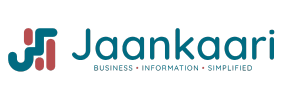The Balance Sheet, also known as the Statement of Financial Position, provides a snapshot of a company’s financial health at a specific point in time. It helps stakeholders understand the company’s assets and liabilities, and the shareholders’ equity, ensuring a clear picture of its financial stability.
Components of the Balance Sheet:
- Assets – These are the resources owned by the company that provide economic value. Assets are categorized into:
- Current Assets: Assets that a business expects to be converted into cash or used up within one year or its operating cycle. For Example: Cash, accounts receivable, inventory, short-term investments, etc. The purpose of current assets is to be able to pay short-term debts and liabilities and fund day-to-day operations.
- Non-Current Assets: Assets that a company owns and intends to use for more than one year, not easily converted to cash within a year. For example: property, equipment, long-term investments, intangible assets, etc. The purpose is to generate long-term revenue and form the basis of a company’s long-term investments.
- Liabilities – These are the financial obligations or debts the company must repay. Liabilities include:
- Current Liabilities: Financial obligations a business settle within one year or the current operating cycle. For Example: Short-term debts, accounts payable, taxes payable, etc. The purpose of current liabilities is to indicate the company’s ability to pay its short term debts and obligations.
- Non-Current Liabilities: Financial obligations that a company expects to pay after more than one year. For example: long-term loans, bonds payable, deferred tax liabilities, etc. The purpose is to finance long-term operations and investments.
- Equity – Represents the ownership interest in a company after deducting liabilities from assets. It reflects the value that would be returned to shareholders if all assets were liquidated and all debts were paid off. It Includes: Common stock, retained earnings, additional paid-in capital, and other equity reserves.
Formula: Equity = Assets – Liabilities
Importance of the Balance Sheet:
- Determines Financial Stability – It helps assess whether the company has enough assets to cover its liabilities, indicating liquidity and solvency.
- Investor Evaluation – Investors use it to analyze the company’s net worth, growth potential, and risk factors before investing.
- Creditworthiness Assessment – Lenders and financial institutions review the balance sheet to decide on loan approvals and interest rates.
- Performance Comparison – Businesses compare balance sheets over time to track financial progress and identify areas for improvement.
A well-maintained balance sheet is essential for informed decision-making, financial planning, and ensuring long-term business success
Balance Sheet Format
Company Name
Statement of Financial Position for the year ended…..
| Particulars | Amount |
| Current Assets | |
| Cash and Cash Equivalents | xxx |
| Accounts Receivables | xxx |
| Inventory | xxx |
| Prepaid Expenses | xxx |
| Short-term investments | xxx |
| Total Current Assests | xxx |
| Non Current Assets | |
| Land and Buildings | xxx |
| Plant and Machineries | xxx |
| Equipments | xxx |
| Total Non Current Assets | xxx |
| Intangible Assets | |
| Goodwill | xxx |
| Trademark | xxx |
| Patent | xxx |
| Total Intangible Assets | xxx |
| Total Assets ( Current + Fixed + Intangible ) | xxx |
| Current Liabilities | |
| Accounts Payable | xxx |
| Outstanding Expenses | xxx |
| Short-term loans and Borrowings | xxx |
| Trade Payables | xxx |
| Total Current Liabilities | xxx |
| Non Current Liabilities | |
| Long-term Loans and Borrowings | xxx |
| Deferred Tax Liabilities | xxx |
| Total Noncurrent Liabilities | xxx |
| Total Liabilities ( Current + Non Current ) | xxx |
| Shareholder’s Equity | |
| Share Capital | xxx |
| Preferred Stock | xxx |
| Share Premium | xxx |
| Retained Earnings | xxx |
| Total Equity | xxx |
| Total Liabilities and Equity | xxx |
















